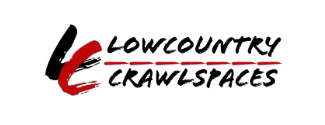Natural Mold Inhibitors: Safe Solutions for Your Home
In our continuous journey towards healthier living and environmental stewardship, the quest for safe, natural, and effective solutions to everyday problems has never been more critical. Mold - a ubiquitous challenge in homes, workplaces, and various industries - poses not only a threat to our health but also to our environment when combated with harsh chemicals. Enter the realm of natural mold inhibitors, a beacon of hope for those seeking eco-friendly and safe alternatives.
This blog delves into the heart of nature’s arsenal, exploring the potent, yet gentle, forces that can prevent mold growth without compromising our health or the planet. From the ancient wisdom of using essential oils to the innovative application of plant extracts, we uncover the science and stories behind natural mold inhibitors. These alternatives not only promise to keep our spaces mold-free but also align with a deeper commitment to sustainability and well-being.
Join us as we navigate through the effectiveness, applications, and benefits of embracing natural mold inhibitors. Whether you're a homeowner, a health enthusiast, or an advocate for the environment, this exploration sheds light on how we can harness the power of nature to create safer, cleaner, and greener living spaces. Discover how stepping back into nature’s embrace can lead us forward into a healthier future.
Understanding Mold and Its Risks
Mold is more than just an unsightly nuisance; it's a pervasive issue that can have significant impacts on both health and home. By understanding the conditions that foster mold growth and recognizing its potential effects, homeowners can take proactive steps to mitigate risks and maintain a healthy living environment.
What Causes Mold in Homes?
Mold thrives in moist, warm, and humid conditions, often taking root in areas where these elements converge. It reproduces through tiny spores that travel through the air, invisible to the naked eye, and settles in places conducive to its growth. Several factors contribute to the proliferation of mold in homes:
- Excessive Humidity: High humidity levels, often above 60%, create an ideal environment for mold spores to settle and grow.
- Water Leaks: Leaky roofs, pipes, and windows can introduce moisture into homes, providing a perfect breeding ground for mold.
- Poor Ventilation: Insufficient airflow in areas like bathrooms, kitchens, and basements can trap moisture, encouraging mold growth.
- Condensation: Cold surfaces can cause condensation, which accumulates and fosters mold in windowsills, exterior walls, and other areas.
Common areas where mold is frequently found include bathrooms, kitchens, basements, around windows, in attic spaces, and anywhere water and moisture are present. Identifying these risk zones is the first step in preventing mold infestation.
Health and Structural Impacts of Mold
Health Risks: Mold exposure can lead to a variety of health issues, ranging from mild allergic reactions to serious respiratory conditions. Short-term effects may include coughing, sneezing, throat irritation, and skin rashes. Long-term exposure, especially in sensitive individuals, can exacerbate asthma, lead to chronic respiratory infections, and impair immune system function.
Structural Damage: Beyond health concerns, mold can significantly impact the structural integrity of a home. It feeds on organic materials like wood, ceiling tiles, and drywall, causing them to deteriorate over time. This degradation can weaken the structural components of a house, leading to costly repairs and potentially dangerous living conditions.
Understanding the causes and consequences of mold growth is essential for maintaining a safe and healthy home environment. By controlling moisture levels, improving ventilation, and promptly addressing water leaks, homeowners can significantly reduce the risk of mold proliferation and protect both their health and their homes.
Top Natural Mold Inhibitors for Your Home
Embracing natural solutions for mold prevention not only supports a healthier living environment but also aligns with eco-friendly practices. Here, we explore some of the most effective natural mold inhibitors, detailing their use, effectiveness, and additional benefits.
Vinegar
How to Use Vinegar as a Mold Inhibitor: White distilled vinegar can be used directly on mold-prone surfaces or diluted with water for a less pungent solution. Simply spray the vinegar solution onto the affected area and let it sit for an hour before wiping clean. For preventive measures, regularly apply vinegar to areas susceptible to mold growth.
Effectiveness and Limitations: Vinegar is effective against most mold species, killing approximately 82% of mold spores. However, its acidic odor may be off-putting to some, and it may not be as effective on porous surfaces where mold can penetrate deeply.
Tea Tree Oil
Preparation and Application Methods: Mix a teaspoon of tea tree oil with a cup of water and spray it onto moldy surfaces. Do not rinse, as the solution continues to inhibit mold growth over time.
Benefits Beyond Mold Prevention: Tea tree oil is not only a powerful antifungal agent but also has antibacterial properties, making it a versatile solution for various household cleaning needs.
Baking Soda
Usage in Different Areas of the Home: Baking soda can be used in a paste form for scrubbing mold off hard surfaces or dissolved in water as a spray solution for softer surfaces. It's safe for use on fabrics and can be used in refrigerators, on upholstery, and in other moisture-prone areas.
Combining with Other Natural Substances: For enhanced mold-fighting power, baking soda can be combined with vinegar or hydrogen peroxide, creating a potent mixture that tackles mold more effectively.
Grapefruit Seed Extract
Recipe for a Mold-Preventing Spray: Combine 20 drops of grapefruit seed extract with 2 cups of water in a spray bottle. Apply to moldy areas without rinsing. This solution can be used as a preventive measure due to its odorless and non-toxic nature.
Advantages of Grapefruit Seed Extract: Besides its effectiveness in combating mold, grapefruit seed extract is praised for its lack of scent and its ability to act as a natural disinfectant, offering a safe alternative for homes with pets and children.
Essential Oils with Anti-Mold Properties
List of Effective Essential Oils: Clove, thyme, cinnamon, and lavender oils are known for their antifungal properties. These oils can be used individually or in combination to create a powerful mold-inhibiting solution.
Guidelines for Safe and Effective Use: When using essential oils, always dilute them in water or a carrier oil to prevent irritation. Regular application on mold-prone areas can prevent mold growth and keep your home smelling fresh.
Implementing Natural Mold Prevention Strategies
Adopting natural mold prevention strategies not only contributes to a healthier living environment but also aligns with sustainable living practices. Effective mold management involves routine cleaning with natural inhibitors and adopting preventive measures that address the root causes of mold growth.
Routine Cleaning with Natural Inhibitors
Creating a Cleaning Schedule Using Natural Solutions: Establish a regular cleaning routine that incorporates natural mold inhibitors like vinegar, tea tree oil, and baking soda. For high-humidity areas such as bathrooms and kitchens, consider weekly cleanings to prevent mold buildup. Other areas might require less frequent attention but should not be overlooked.
Tips for Thorough and Effective Cleaning:
- Target Mold-Prone Areas: Focus on damp areas where mold is likely to grow, such as bathroom tiles, kitchen sinks, and window sills.
- Use the Right Concentrations: For substances like vinegar and tea tree oil, ensure you're using effective concentrations that kill mold without damaging surfaces.
- Allow Solutions to Sit: After applying a natural inhibitor, let it sit for at least an hour to penetrate and kill mold spores before wiping away.
- Dry Surfaces Thoroughly: After cleaning, ensure that surfaces are thoroughly dried to prevent moisture from lingering, which could encourage mold growth.
Preventive Measures Beyond Cleaning
Humidity Control and Ventilation: Maintaining indoor humidity levels below 60% can significantly reduce the risk of mold growth. Use dehumidifiers in damp areas and ensure proper ventilation throughout your home, especially in bathrooms and kitchens, to circulate air and reduce moisture.
Regular Inspections and Maintenance:
- Inspect for Water Leaks: Regularly check pipes, roofs, and windows for leaks that could introduce excess moisture into your home.
- Maintain Gutters and Downspouts: Ensure that gutters are clean and downspouts direct water away from your home's foundation to prevent moisture accumulation.
- Seal Windows and Doors: Apply caulking around windows and doors to prevent outside moisture from entering your home.
By integrating these natural mold prevention strategies into your routine, you can protect your home from mold growth without relying on harsh chemicals. These practices promote a safe, healthy, and sustainable living environment, aligning with the principles of expertise, authoritativeness, and trustworthiness in providing practical and effective solutions for mold management.
Considerations When Using Natural Mold Inhibitors
While natural mold inhibitors offer a safer, eco-friendly alternative to chemical treatments, their effectiveness and safety can vary depending on the environment and individual health conditions. Understanding these considerations ensures that you choose the most appropriate and effective methods for your specific needs.
Effectiveness in Different Home Environments
Tailoring Solutions to Specific Areas and Conditions: The effectiveness of natural mold inhibitors can depend greatly on the specific conditions of each area in your home. Factors such as humidity levels, material types (e.g., porous vs. non-porous surfaces), and ventilation can influence how well natural solutions work.
- High Humidity Areas: In places like bathrooms and basements, where moisture levels are typically higher, stronger solutions or more frequent applications may be necessary.
- Material Considerations: Natural inhibitors might have varying degrees of effectiveness on different materials. For instance, vinegar can work well on non-porous surfaces but may not penetrate porous materials as effectively.
- Ventilation and Light: Some natural inhibitors, like tea tree oil, may be more effective in well-ventilated areas or in combination with good natural light, which can also help inhibit mold growth.
- Customizing your approach based on these factors will enhance the effectiveness of natural mold inhibitors, ensuring your home remains healthy and mold-free.
Safety and Allergy Considerations
Ensuring Safe Use, Especially for Those with Allergies: While natural, not all mold inhibitors are free from potential health risks, especially for individuals with specific allergies or sensitivities.
- Essential Oils: Some people may experience skin irritation or allergic reactions to certain essential oils. Always perform a patch test before widespread application and consider diffusing oils in well-ventilated areas to minimize respiratory discomfort.
- Vinegar: The strong odor of vinegar can be irritating to some individuals, particularly those with respiratory conditions. Diluting vinegar with water can mitigate this issue while still maintaining its effectiveness against mold.
- Baking Soda: Generally safe for most users, baking soda can be a preferable option for those with sensitivities. However, when mixing baking soda with other substances, ensure no harmful reactions occur that could release irritating gases.
When using any natural mold inhibitor, it's crucial to consider the health and safety of all household members, including pets. Opt for solutions that offer both effectiveness and safety, and always test in small, inconspicuous areas before full application.
The Power of Natural Mold Inhibitors
In the quest for a mold-free living environment, the allure of natural solutions is growing stronger. Beyond their environmental appeal, natural mold inhibitors offer a host of benefits, from safeguarding health to being cost-effective and easily accessible. This section delves into the advantages of using natural solutions for mold prevention and explores the science behind how these inhibitors work, offering a comparison with their chemical counterparts.
Benefits of Using Natural Solutions
Safety for Health and the Environment: One of the most compelling reasons to opt for natural mold inhibitors is their safety profile. Unlike chemical inhibitors, which can contain harsh substances harmful to both health and the environment, natural solutions typically have a lower toxicity level. This makes them a safer choice for households, especially those with children, pets, or individuals with sensitivities.
Cost-Effectiveness and Accessibility: Many natural mold inhibitors are derived from common household items or substances that are readily available and affordable. Ingredients like vinegar, baking soda, and essential oils can be used in various combinations to create effective mold-preventing solutions without the need for expensive, specialized products.
How Natural Inhibitors Work Against Mold
The Science Behind Natural Mold Prevention: Natural mold inhibitors work by creating conditions that are inhospitable to mold growth. For example, vinegar, with its acetic acid content, can kill mold spores and prevent their spread. Similarly, essential oils like tea tree and clove oil possess antifungal properties that disrupt the growth and reproduction of mold spores.
Comparison with Chemical Inhibitors: While chemical inhibitors may offer strong and immediate results against mold, they often come with drawbacks such as potential toxicity and environmental harm. Natural inhibitors, on the other hand, may require more frequent application or higher concentrations but offer a safer, more eco-friendly approach to mold prevention. Additionally, natural solutions can be just as effective as chemical ones when used correctly and consistently, especially for preventive measures and mild mold infestations.
The shift towards natural mold inhibitors reflects a broader trend towards sustainability and health-conscious living. By understanding the benefits and mechanisms of natural solutions, homeowners can make informed choices about mold prevention, opting for methods that not only protect their homes but also their health and the planet. Whether used alone or as part of an integrated approach to mold control, natural mold inhibitors offer a powerful tool in the fight against mold, combining efficacy with environmental responsibility.
FAQs
Contact Lowcountry Crawlspaces Today!
Lowcountry Crawlspaces will do everything we can to ensure your experience with us is excellent.
Request A FREE Estimate
CHECKOUT RECENT POST



Schedule Your FREE Crawl Space Evaluation Today
There Is No Crawl Space Job We Can’t Fix!




